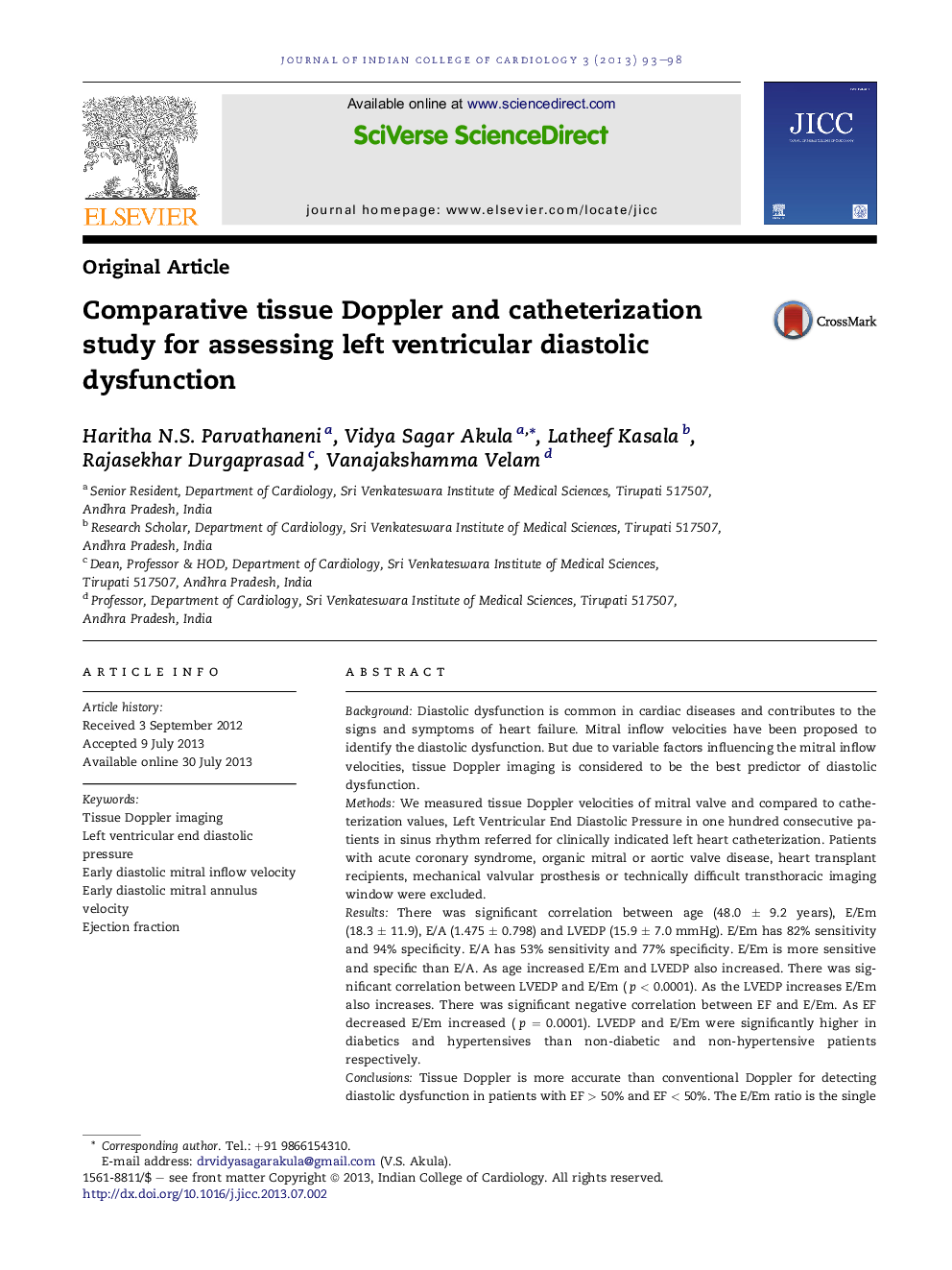| Article ID | Journal | Published Year | Pages | File Type |
|---|---|---|---|---|
| 2973907 | Journal of Indian College of Cardiology | 2013 | 6 Pages |
BackgroundDiastolic dysfunction is common in cardiac diseases and contributes to the signs and symptoms of heart failure. Mitral inflow velocities have been proposed to identify the diastolic dysfunction. But due to variable factors influencing the mitral inflow velocities, tissue Doppler imaging is considered to be the best predictor of diastolic dysfunction.MethodsWe measured tissue Doppler velocities of mitral valve and compared to catheterization values, Left Ventricular End Diastolic Pressure in one hundred consecutive patients in sinus rhythm referred for clinically indicated left heart catheterization. Patients with acute coronary syndrome, organic mitral or aortic valve disease, heart transplant recipients, mechanical valvular prosthesis or technically difficult transthoracic imaging window were excluded.ResultsThere was significant correlation between age (48.0 ± 9.2 years), E/Em (18.3 ± 11.9), E/A (1.475 ± 0.798) and LVEDP (15.9 ± 7.0 mmHg). E/Em has 82% sensitivity and 94% specificity. E/A has 53% sensitivity and 77% specificity. E/Em is more sensitive and specific than E/A. As age increased E/Em and LVEDP also increased. There was significant correlation between LVEDP and E/Em (p < 0.0001). As the LVEDP increases E/Em also increases. There was significant negative correlation between EF and E/Em. As EF decreased E/Em increased (p = 0.0001). LVEDP and E/Em were significantly higher in diabetics and hypertensives than non-diabetic and non-hypertensive patients respectively.ConclusionsTissue Doppler is more accurate than conventional Doppler for detecting diastolic dysfunction in patients with EF > 50% and EF < 50%. The E/Em ratio is the single best predictor of LV filling pressure with highest sensitivity and specificity when compared with all other parameters. E/Em can be used as a screening test for detection of diastolic dysfunction.
